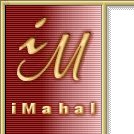 |
|
4.4 Test of English as a Foreign Language (TOEFL) Many colleges in America and Canada require foreign students to take the TOEFL as a part of admissions requirements. The test is designed to test the proficiency in the English language of candidates whose native language is not English. The test is administered in over 180 countries. You can obtain up-to-date information for the TOEFL (http://www.toefl.org) on the Web. As noted before, the TOEFL is a threshold test. So long as you score above the threshold, your performance is acceptable. Below the threshold, your performance is unacceptable. The threshold is determined by each college individually and, as such, there is no universal definition of the threshold. The test is computer-based in most regions of the world, and in the areas where access to CBT is not available, the paper-based test is offered. You can obtain a copy of the TOEFL Information Bulletin for Computer-Based Testing (ftp://ftp.ets.org/pub/toefl) and of the TOEFL Information Bulletin for Supplemental TOEFL Administrators (ftp://ftp.ets.org/pub/toefl) for the paper-based test. These booklets on the Web contain most of the information; however, you must request a print copy, because it contains the electronically scannable form needed to register for the test. You can obtain the print copy from: Institute of Psychological and Educational Measurement (IPEM) You can also request the bulletin(s) online (http://www.toefl.org). These bulletins provide all the information you need about the TOEFL: the test structure, sample questions, scoring and reporting, test locations, registration process, fees, advice on taking the test, and so on. You should read the relevant bulletin cover-to-cover; it offers important, relevant and essential information. The computer-based TOEFL consists of four parts:
The overall score is on a scale of 0 to 300. The scale for Listening is 0 to 30. Your score from Structure and Writing are combined to produce a score on a scale of 0 to 30. The scale for Reading is 0 to 30. The overall score is simply 10 times the average of Listening, Structure/Writing and Reading. The paper-based TOEFL has a similar structure, containing three parts: Listening, Structure and Writing, and Reading. These three parts have the same objectives as the 4-parts CBT. You are not required to compose an essay. The types and approach of questions is somewhat different from the CBT to equalize the difference. The bulletins recommended above offer additional details. Performance on the PBT TOEFL is scored on a different scale from the CBT, in part to avoid an overlap with the CBT. The PBT scale is as follow: Listening, and Structure and Writing are on a scale of 31 to 68 each, and Writing on a scale of 31 to 67. The overall score - on a scale of 310 to 677 - is ten times the average of three component parts. You can obtain additional information and answers to frequently asked questions about the CBT TOEFL (http://www.toefl.org) and PBT TOEFL (http://www.toefl.org) on the Web.
|
 |
|
 |
|||||


